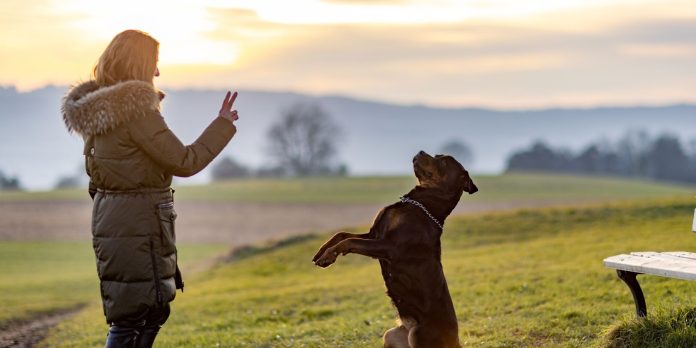Introduction
Training your dog is an essential part of your journey together. While verbal commands are common, incorporating dog command hand signals can significantly enhance communication with your furry friend. This guide will explore easy steps to introduce hand signals into your dog’s training routine.
Why Use Hand Signals?
Hand signals are a powerful tool in dog training. They offer a visual cue that can be more distinct for dogs than verbal commands, especially in noisy environments or as dogs age and their hearing diminishes.
Starting with Basics
Choose Simple Signals: Begin with basic commands like sit, stay, and come. Ensure each signal is distinct and consistent.
One Command at a Time: Introduce one hand signal at a time. Pair it with the verbal command until your dog understands the gesture.
Building the Connection
Once your dog starts responding to basic dog command hand signals, gradually reduce verbal cues. This transition helps your dog focus more on visual cues. Remember, patience and consistency are key!
Practicing Regularly
Consistent practice is crucial. Short, regular training sessions are more effective than infrequent, long ones. This helps your dog retain what they’ve learned and stay engaged.
Advanced Signals
After mastering the basics, you can introduce more complex signals for actions like rolling over or playing dead. Keep the signals straightforward and distinct from the basic ones.
Troubleshooting Common Issues
If your dog struggles, step back to the last successful command and proceed slowly. Always use positive reinforcement like treats or praise to encourage and reward their progress.
FAQs
Q: How long does it take for a dog to learn hand signals?
A: This varies depending on the dog and consistency of training. Generally, a few weeks of regular practice can yield noticeable results.
Q: Can old dogs learn hand signals?
A: Absolutely! Older dogs can learn hand signals, often finding them easier than verbal commands, especially if they have hearing issues.
Q: Should I use treats when training with hand signals?
A: Yes, treats are a great way to motivate and reward your dog during training sessions.
Q: Can hand signals be used in conjunction with verbal commands?
A: Yes, initially pairing hand signals with verbal commands is effective. Eventually, you can transition to using only hand signals.
Q: What if my dog isn’t responding to the hand signals?
A: Be patient and consistent. Ensure your signals are clear and distinct. Sometimes, revisiting basic training can help.
In conclusion, teaching your dog command hand signals is a rewarding process that enhances your communication and strengthens your bond. With patience, consistency, and positive reinforcement, your dog will soon respond to your visual cues effectively. Remember, every dog learns at their own pace, so celebrate the small victories along the way!











